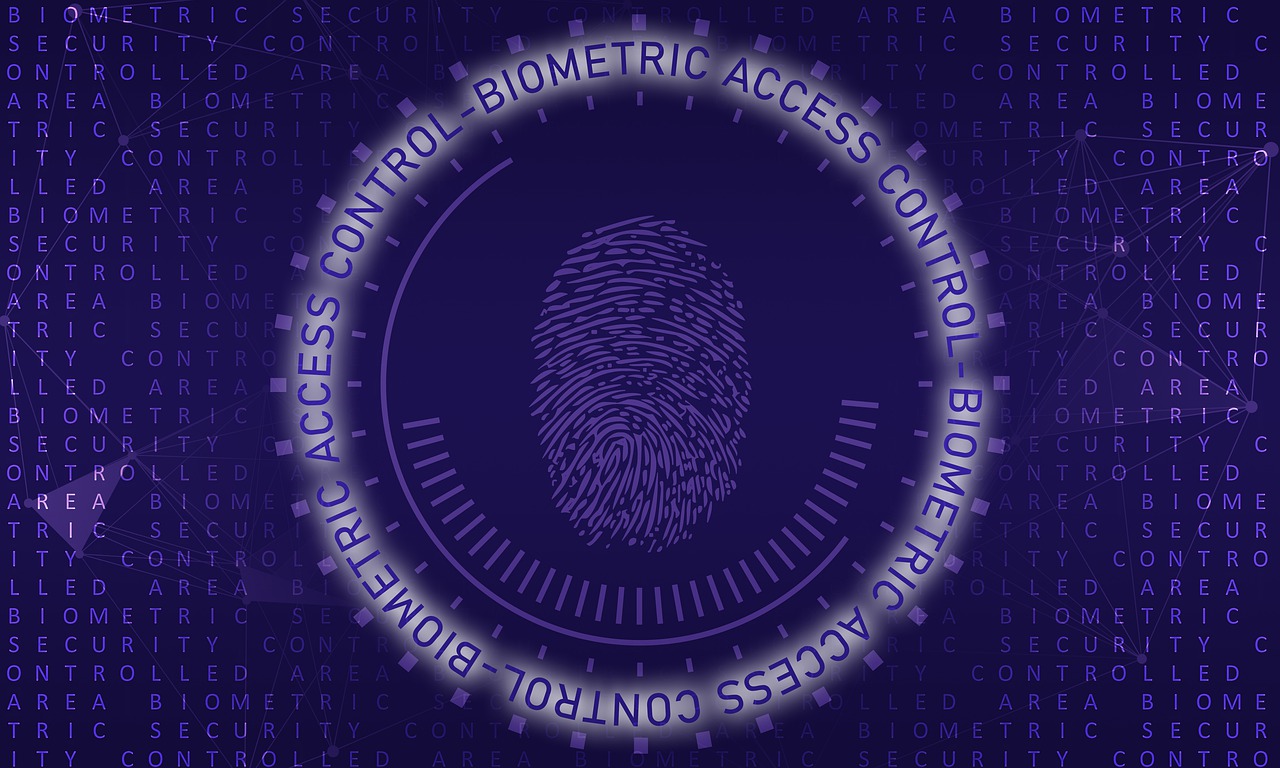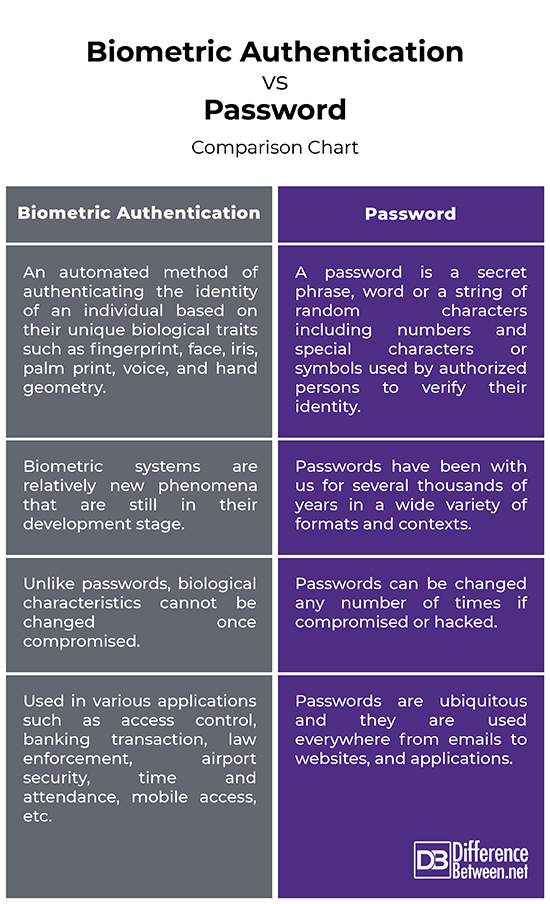Difference Between Biometric Authentication and Password
Remember the last time when you used your fingerprint to unlock your phone or used your face to unlock your laptop? Probably, just a while ago, right? Well, fingerprint recognition has been used in the smartphones for user authentication for quite some time. In fact, fingerprint recognition has been used across several industries and organizations for customer and employee management. This sophisticated technology we use is one of the many biometric systems in widespread use and which is used to automatically identify and authenticate people. Fingerprint recognition is still one of the most used and effective biometric systems used throughout. Before biometric systems, people used passwords and they still use passwords to gain access to a wide range of systems or services. But how is biometric authentication any different from password protection and how do they work? Let’s take a look.

What is Biometric Authentication?
Biometric authentication is a security measure that matches biometric features of a user to verify or recognize his/her identity. It is an automated method of authenticating the identity of an individual based on their unique biological characteristics. It is a security process to verify that a person is who he says he is. The word automated here differentiates biometrics from the larger field of human identification science. Biometrics refers to physical or behavioral human characteristics such as fingerprint, face, hand geometry, iris, palm print, voice, and digital signatures which can be used to digitally identify an individual to grant them access to data, devices or systems. Biometrics, in this context, is the use of computers to recognize people, despite all the similarities across individuals and variations within individuals. So, simply put, biometric authentication is the science of positively identifying a person based upon their unique traits called biometrics.

What is Password then?
Passwords are still one of the most preferred ways to secure your personal information. In fact, passwords used to be the only means to safeguard your personal files or photos, confidential data, or just anything you want to be protected against unauthorized access. Passwords have been with us for several thousands of years in a wide variety of formats and contexts, and have always been vulnerable to security attacks of one sort or another. Passwords are a string of characters including letters, numbers and special characters or symbols that are typically used to authenticate the identity of a person. Passwords are typically accompanied by a user name or user ID which is unique to the user and allow user access to a device, application or a website. Sometimes, passwords are only numeric in which case they are also called a personal identification number or a PIN.
Difference between Biometric Authentication and Password
Meaning
– Biometric authentication is an automated method of authenticating the identity of an individual based on their unique biological traits such as fingerprint, face, hand geometry, iris, palm print, voice, and digital signature. Biometrics is the science of positively authenticating the identity of an individual based on these unique traits. Passwords are a whole different story. A password is a secret phrase, word or a string of random characters including numbers and special characters or symbols used by authorized persons to prove their right to access a device, system, application or website.
Maturity
– Passwords are ubiquitous meaning they are used everywhere. Passwords have been with us for several thousands of years in a wide variety of formats and contexts; in fact, they are still one of the most preferred ways to secure your personal information. Passwords are the most common way to verify your identity when using websites, applications, email clients, payment portals, and even your personal computing devices such as your smartphone or laptop. Biometric systems, on the other hand, are still on their developing phase, although, fingerprint recognition is considered one of the most mature biometric systems out there.
Security
– While both are secure authentication methods, the difference lies in how secure. Biometrics are unique biological characteristics which are unique to every person. Facial recognition is the most recent biometric addition which proved to be fairly non-intrusive compared to other biometric systems and more secure. But like every system has its flaws, biometrics has its shortcoming too and they also face security compromises. And unlike passwords, biological characteristics cannot be changed once compromised. Strong Passwords are random and strong enough to thwart a brute and passwords can be changed any number of times and depending on the algorithm used, they can be pretty much secure.
Biometric Authentication vs. Password: Comparison Chart

Summary
Passwords have long been the primary means of protecting your personal information and identity, and they have been around for thousands of years. It is a common misconception that passwords are soon going to be dead because of setbacks in digital security. Well, passwords are easy to crack because people do not usually adhere to the password security measures. Despite that, passwords are still the first line of defense against unauthorized access to your personal and confidential information. Biometrics, on the other hand, represent the ultimate in authentication and although, the concept of biometric authentication is not relatively new, we are seeing a massive explosion in the widespread of biometric systems in the recent years.
- Difference Between Caucus and Primary - June 18, 2024
- Difference Between PPO and POS - May 30, 2024
- Difference Between RFID and NFC - May 28, 2024
Search DifferenceBetween.net :
Leave a Response
References :
[0]Kisku, Dakshina R. et al. Advances in Biometrics for Secure Human Authentication and Recognition. Florida, United States: CRC Press, 2013. Print
[1]Wayman, James L. et al. Biometric Systems: Technology, Design and Performance Evaluation. Berlin, Germany: Springer, 2005. Print
[2]Das, Ravi. Biometric Technology: Authentication, Biocryptography, and Cloud-Based Architecture. Florida, United States: CRC Press, 2014. Print
[3]Tipton, Harold F. and Micki Krause. Information Security Management Handbook, Volume 2. Florida, United States: CRC Press, 2004. Print
[4]Image credit: https://commons.wikimedia.org/wiki/File:Hacking_password_illustration.jpg
[5]Image credit: https://cdn.pixabay.com/photo/2019/09/25/08/56/biometric-4503070_1280.jpg
